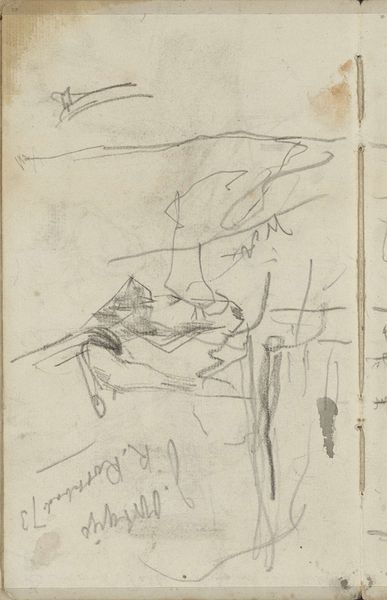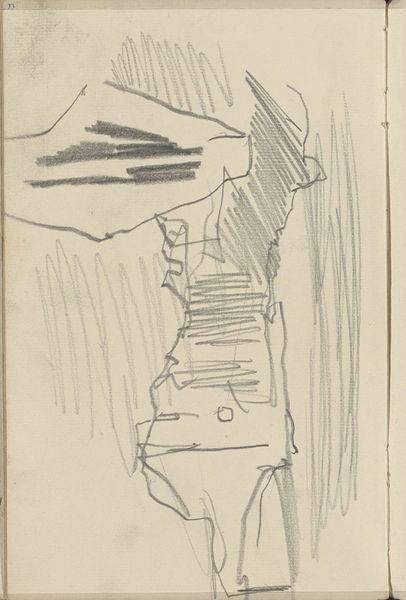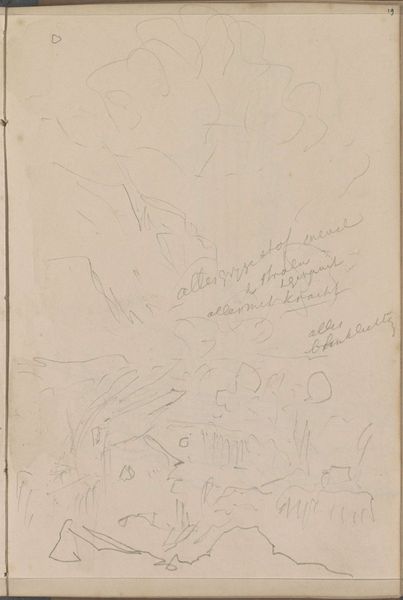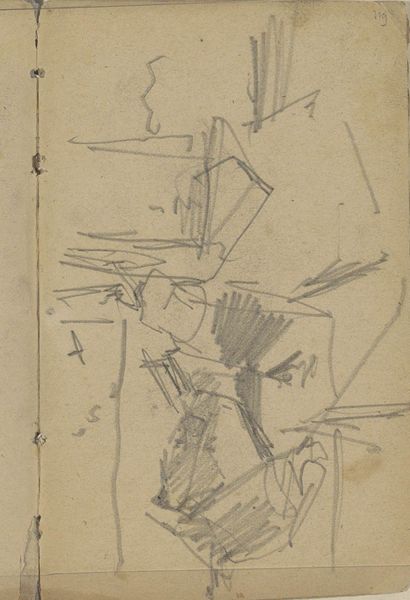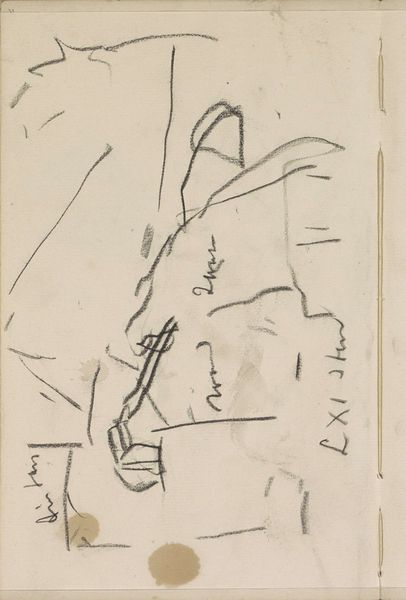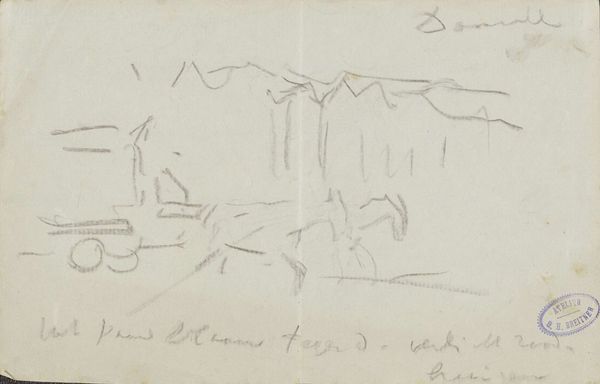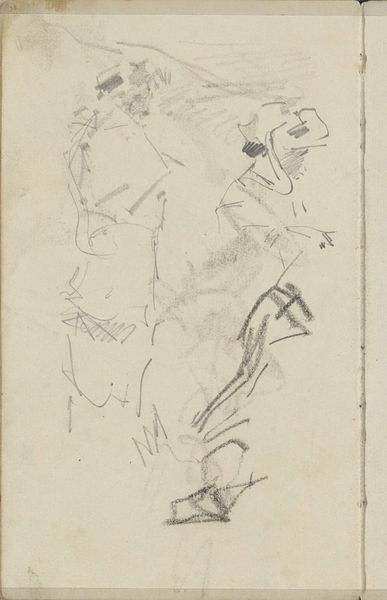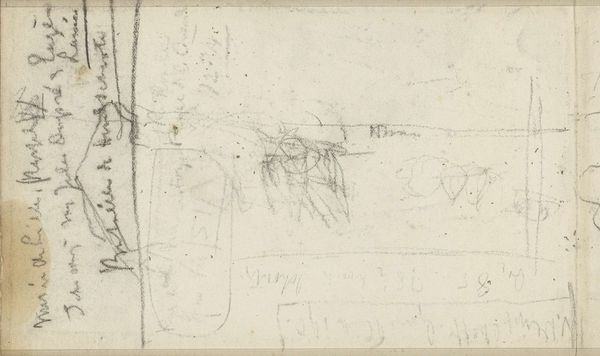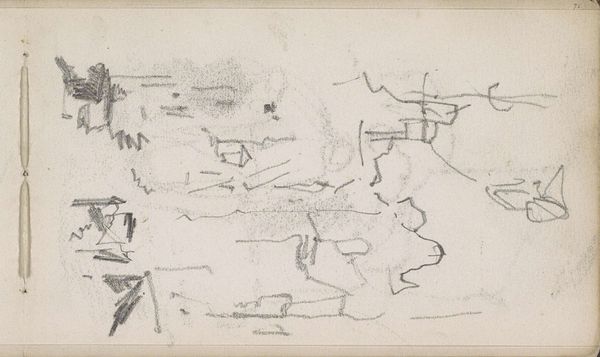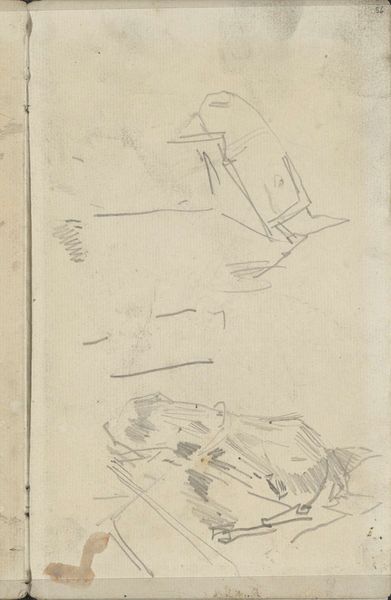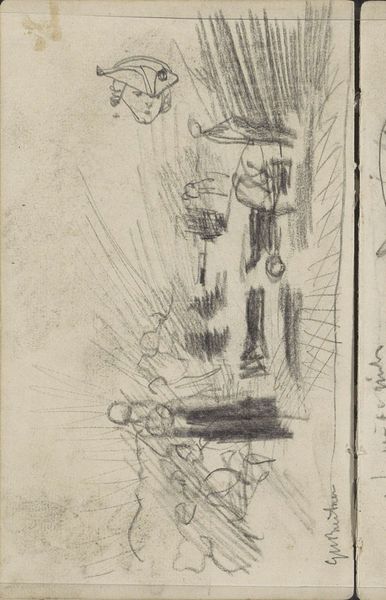
drawing, pencil, graphite
#
drawing
#
impressionism
#
landscape
#
pencil
#
graphite
Copyright: Rijks Museum: Open Domain
Curator: Figures, possibly on the Street. It’s a pencil and graphite drawing by George Hendrik Breitner, created between 1884 and 1886. What’s your immediate response to it? Editor: A sketch that's full of energy, yet muted. I can almost feel the chill in the air and the quick pace of city life that Breitner captured in its simplest form. Curator: Breitner was known for capturing everyday life, especially street scenes in Amsterdam. The materiality is telling: pencil, graphite – the tools of immediacy, right? Editor: Exactly. The sketchiness highlights his process, focusing on the urban fabric itself. Breitner seems most invested in portraying the relationship of his subjects to their working environment, not some ideal about the city. What else strikes you about it? Curator: The anonymity. Are the figures actually anonymous, or are we being positioned in a way that mirrors social observation of individuals from a place of distance, perhaps class? What sort of societal role does this perspective occupy, if any? Editor: Well, he uses line to define planes that quickly establish a depth of field - it isn’t simply to capture people. The pencil and graphite have a clear connection to its socio-political time. These materials democratized image-making, made art of the street accessible. The lack of detail focuses the mind on the essence of these individuals labor. Curator: Yes, and think about how his later photographs informed his painting style. There’s a very modern sense of cropping and movement happening, an embrace of realism. It disrupts bourgeois notions of portraiture. Editor: It feels revolutionary, doesn’t it? Refusing the posed studio portraits for fleeting glimpses of lives in motion. Breitner clearly emphasizes both production of labor and his own method. I suppose my takeaway is seeing how he leveraged those common tools for radical ways of representation. What resonates with you most after our discussion? Curator: It’s Breitner's disruption of expected social conventions. How it's reflective of a much larger questioning around representation itself. I think he anticipated, in many ways, conversations that have long occupied not just art historical debates, but broader socio-political movements today.
Comments
No comments
Be the first to comment and join the conversation on the ultimate creative platform.


